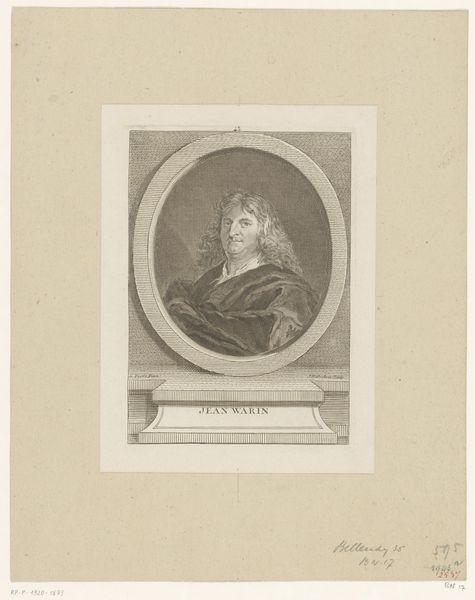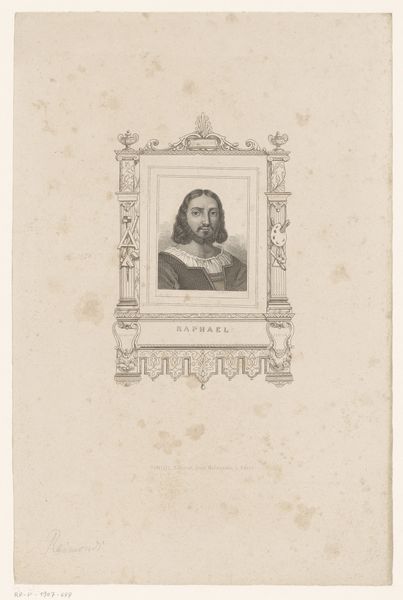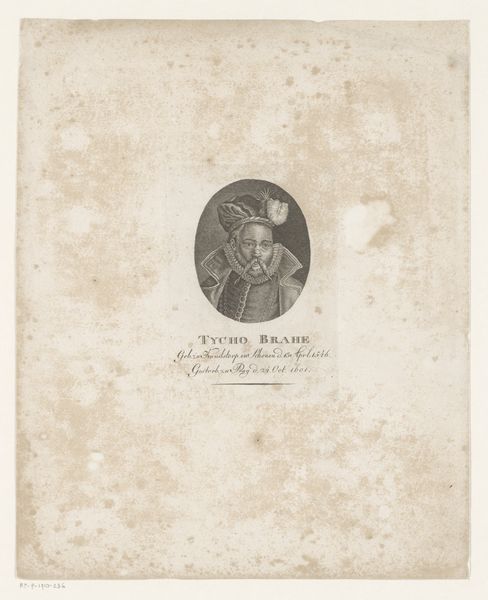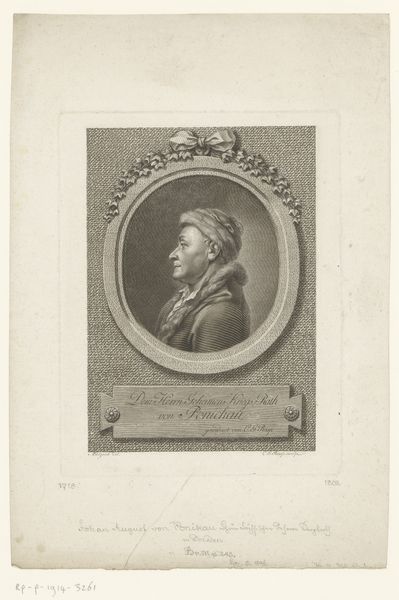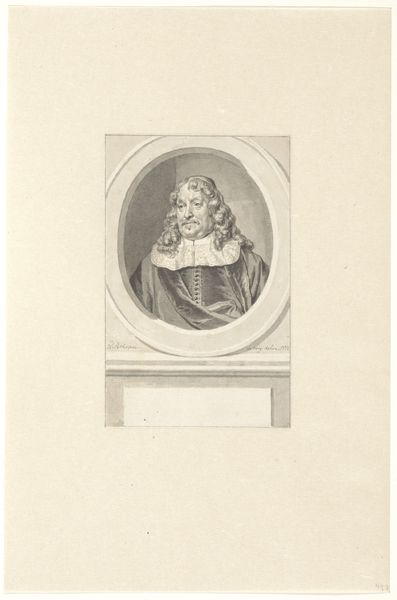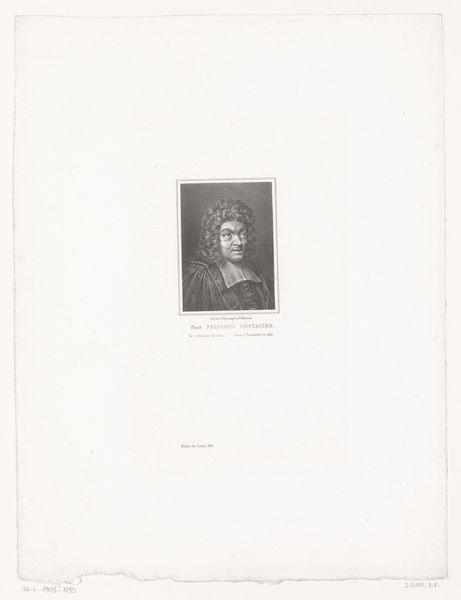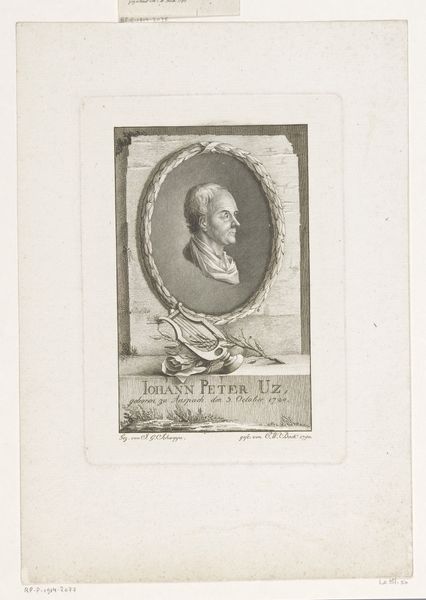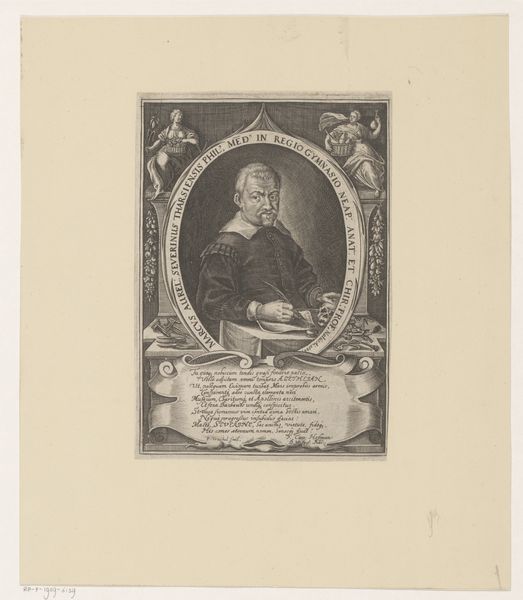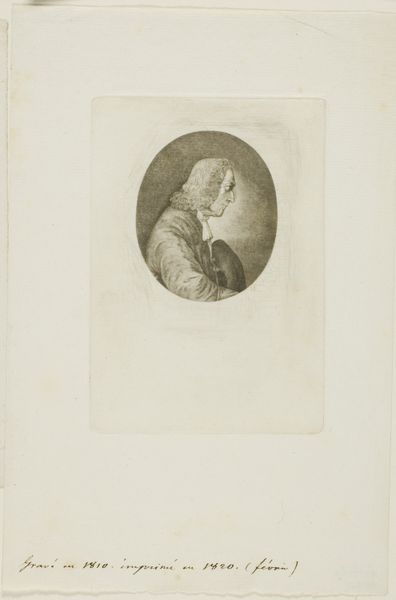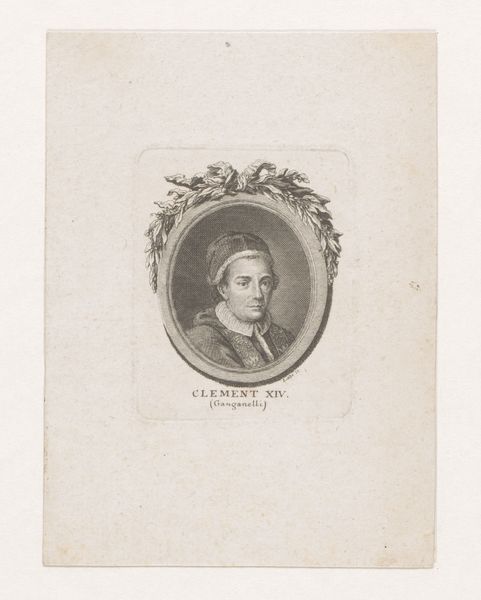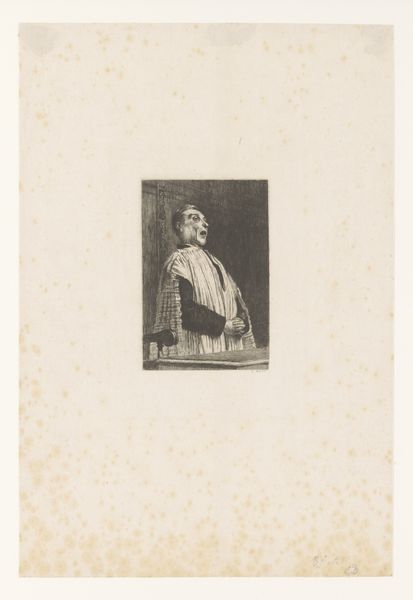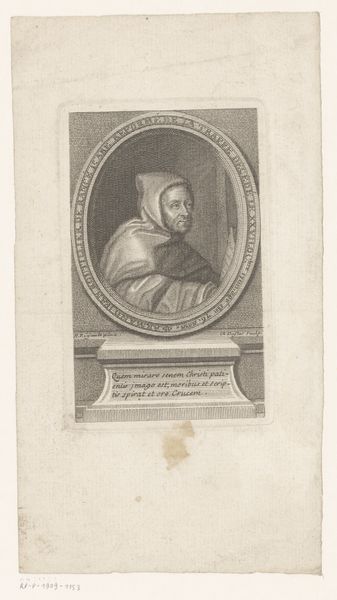
Portret van Ludovico Ariosto in een versierde cartouche 1830 - 1850
0:00
0:00
print, paper, graphite, engraving
#
portrait
#
neoclacissism
# print
#
paper
#
graphite
#
engraving
Dimensions: height 271 mm, width 178 mm, height 83 mm, width 56 mm
Copyright: Rijks Museum: Open Domain
Curator: Immediately, what strikes me is the weight of tradition—so much symmetry, yet such sensitivity in the portrayal. Editor: Agreed, it has a very academic feel, which fits since we are gazing upon Auguste Dutillois's "Portret van Ludovico Ariosto in een versierde cartouche," dating back to sometime between 1830 and 1850. It's part of the Rijksmuseum's collection. Curator: That cartouche—the elaborate frame—it both honors Ariosto and sort of...buries him alive. The laurel wreath feels less like a symbol of triumph and more like a funerary adornment here, doesn’t it? Editor: The materials used give the artwork a sense of subdued grandeur—we have graphite and engraving on paper. Looking closer, one cannot help noticing that within that Neoclassical frame there is great tonal range from areas of flat gray to sharp lines defining form, especially in the poet’s face. Dutillois uses light to model form beautifully. Curator: Exactly! It is a wrestling match between precision and soul. Dutillois probably admired Ariosto, saw him as this grand literary figure, but could only really access him through this filter of historical idealization. Makes you wonder what Ariosto himself would have thought! Editor: He probably would have laughed. I mean, look at his eyes – it is the eye of a genial but very perceptive man! All that seriousness around the figure might just underscore how he might see himself as anything but. Curator: You think he'd appreciate the irony? That a man known for his fantastic imaginative flair has been reduced to a sober, stately icon? Maybe. Still, Dutillois gives us a window, however clouded, into a moment in which the past tried to connect with itself. Editor: Well said. Each stroke invites us to decode how tradition shapes memory and continues influencing culture.
Comments
No comments
Be the first to comment and join the conversation on the ultimate creative platform.
